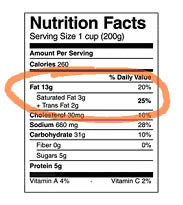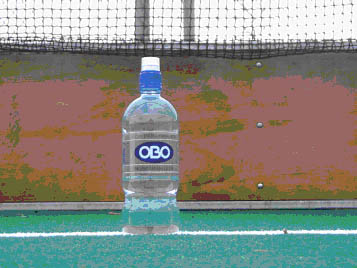When facing a drag flick from the top of the D on a short corner the biggest problem for the goalkeeper is to know how long to stand up (or remain standing) to deal with the incoming shot. If the destination is not given away, with the ability of the shooter to disguise it, you can only react to it. The timing affects your chance to save – you have to match exactly the ball’s arrival time to be successful.
This is a problem that even the world’s best suffer from, as they face the top drag flickers who like to have a few tricks up their sleeve to disguise their intentions and more importantly the destination of the ball. Just like on a penalty flick the shooter can ‘throw the shoulder’ with the keeper expecting a shot up and over them (or a low shot) exposing the open space to the side and slotting the ball away.
At the Olympics, this technique was shown at its best (unfortunately for the goalkeepers there). Germany’s gold winning goal was down to a successful high and looping drag flick on a short corner opportunity, where Fransisco Cortes left his feet early, whilst Vogels was beaten in the bronze medal game by a flick that similarly went up and over him.
When a lot of keepers make the transition to higher levels of play, they can often struggle to combat it, getting beaten by a well executed drag flick. I can personally admit to this in my younger days and other than the humiliation, it’s something you’ll want to eliminate from your game. But obviously the only way you can get better is to make mistakes and learn from them: in a lot of cases, like mine, you may be playing a lower standard but be facing a ringer.
There are not many county (lower division) teams where players can flick that well, but regional and onwards they are part of the game and it is therefore essential that, if that is a considered potential target, it needs to be learnt. You need to be aware that if you are ‘climbing up the ladder’, it is something you will meet and need to work on to beat.
Committing wrongly
The problem with going against the flick is knowing when to time the jump or dive; go down too early and you’ll have the ball roofed over you, but stay up too long and you will lack extension to reach the shot (in this case you will have to jump into the save). Similarly, making the wrong choice of save will hamper your efforts.
It is also difficult to read the direction of the ball: normally the ball will go to the corners or straight; in the path of the stick’s position, but low balls wide of the pad, which are difficult to reach standing up, can also be played by the striker.
Leaving your feet too early
With a drag flick, the goalkeeper in question can easily be caught out (by misjudgement and second guessing on their part) by a high ball that loops upwards onto goal, looking to beat the standing goalkeeper by getting it to a height and position that is impossible to stop. Unlike a strike, which is easier to read, the drag flick can be faster and curves with the flight of the stick; it can sweep into the corner or around you.
A lot of goalkeepers are taken back by the type of shot; confused about how to react and therefore act indecisively and misjudge it, or are tricked by the stick positioning; going down incredibly easy (and fast), leaving a whole area of net above them for the ball to go into. In this situation, the goalkeeper is effectively lobbed, with the ball going straight up over them without the ability to even get a touch on it, since they are too far gone (with downward momentum) to reach into any potential save.
Learning to stay on your feet
In order to prevent the ball zooming past you by aggressively committing too quickly against the flick for the attempted save, you need to work on timing your response to meet the ball. Timing the saving move with the actual shot, rather than going before the ball is released, gives you a better chance of reaction, instead of being beaten so easily.
The trick to saving the drag flick is to react with it: don’t be too early, or too late, as you won’t be able to stop it. React as the ball comes in – ready to stop it on its release, given the speed of the flick. Stay up as long as you need to and outwait the urge to move into a save immediately; be patient and react to the shot as it comes at you.
- Stay up for the stop by the waiting ‘stopper’ (with their stick down to halt the ball to ensure the best shot on release); the ball will often be stopped dead before the flick to make it easier to drag flick (rather than having to drag a moving ball!)
- Stay aware of potential corner routines involving players, but do NOT get caught up in their efforts to disguise the shot
- Keep your concentration – react to it as the flick is released – only moving on the flick itself
- Watch the ball all the way into the save to make sure you get as much behind it as possible
Making the wrong choice
Another point to take note of is the bad choice of save – going down with a long barrier, when the only means of a save is to stay up. There are still a lot of keepers, despite the rule changes and responding changes in the format and style of the game, that seem to log no matter what (as a first choice move rather than playing the ‘read and react style’), despite the threat of a well executed flick. These are the most vulnerable to a flick given the obvious height and speed of the ball: being lobbed by the ball as they obviously ‘down and out’ on the play.
This is an easy mistake to make that will have disastrous results – giving away a goal for free. Even internationals have managed it; Argentina’s keepers inabilities at short corners were exposed in recent world cups. Indecision will lead to problems as you cannot react with the shot, wasting time and not being fully prepared for a save. Work out how to make the save properly and stick to it: don’t mess around and have a clear plan.
Rule of thumb
The easiest thing is to learn how to read a straight strike versus a flick: working out the shooter’s intentions by their stick positioning. Reading their body language, posture, and looking at their eyes, will help you work out where they are looking to shoot.
– A shooter going for a straight strike will grip the stick at the top to gain power and hold the stick nearer their body to control the shot
– A shooter drag flicking the ball will have their hands further down the stick to get more control over the flick and hold the stick further back from their body; gaining more upward movement on the flick
 Get used to planning what you’re going to eat each day. Planning helps to stop eating whatever, whenever. Check the labels for the amount of fat, carbs, and protein they contain.This is an example of an eating plan for a player who has a light run in the morning followed by training or game in the afternoon.
Get used to planning what you’re going to eat each day. Planning helps to stop eating whatever, whenever. Check the labels for the amount of fat, carbs, and protein they contain.This is an example of an eating plan for a player who has a light run in the morning followed by training or game in the afternoon.